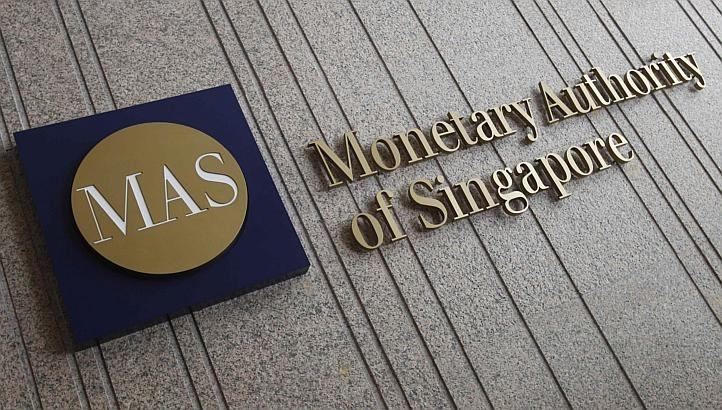
Photo credit: Drumah.
Singapore’s central bank is serious about fintech and it’s throwing a week-long party this week to show it.
The inaugural Fintech Festival features innovation lab crawls throughout the city-state, a spotlight on fintech startups, and a sprawling two-day event bringing attendees together with speakers and companies from all over the world.
Ravi Menon, managing director of the Monetary Authority of Singapore (MAS), said that a total of 11,000 people from 50 countries are attending the festival week’s various events. That’s a whole lot of people interested in what happens next with financial technology.
High praise
Anyone who has an interest in startup ecosystems globally knows that fintech has been a big deal for a while. What’s changed in the past year or so? Large banks and financial institutions have started paying attention. And in Singapore, a lifelong financial and trading hub for Asia, it doesn’t get much larger than MAS.
Big institutions like MAS have been criticized for being slow-moving and resistant to change. Through this festival, MAS wants to show it’s anything but: it’s embracing new technology, taking advantage of its potential, and reaching out to tech startups.
During his speech, the director straight up compared smartphones to Pokemon. “[They are] pocket-sized monsters that pack more data and more processing power than super computers just a couple of decades ago.” That’s how hip MAS is these days.

Image credit: Pexels.
Opening up the sandbox
The central bank has already announced a series of forward-facing initiatives.
It wants to set up a regulatory sandbox for fintech startups to play in without risking customers’ data (and money). In fact, it released guidelines for this sandbox just today, outlining the project’s objectives and criteria for participating.
It announced guidelines for companies using the cloud to offer financial services. “There used to be a view within some quarters that ‘MAS does not like the cloud,’” the director said. “Lest there be any lingering doubt, let me reiterate: MAS has no objections to [financial institutions] using the cloud.”
MAS wants to show it’s embracing new technology and taking advantage of fintech’s potential.
It launched its own innovation lab, called Looking Glass, to experiment with fintech solutions and provide consultation to startups.
And last week, it released 12 APIs based on its financial data for developers and financial institutions to use in their products and services.
The latest notable development is use of the blockchain to enable cross-border payments between major banks. In itself, that could be a big step toward legitimizing the technology that makes things like bitcoin possible – everyone seems to be excited about the blockchain, but few are sure how it can be best applied on the ground. A vote of confidence from a key financial institution like MAS could bring it into the mainstream.
Plans for the current pilot involve banks depositing cash with MAS as collateral and receiving MAS-issued digital currency in exchange. They can then move funds to other banks in cross-border transactions using that currency instead of sending payment instructions through MAS.

Photo credit: prykhodov / 123RF.
Going forward
Here are some more things MAS is planning for fintech in Singapore:
-
Streamlined regulations for online payments services into a single, unified framework. The director said that ewallet and payment startups in Singapore are some of the most visible fintech players but their services face complex regulations. MAS wants to simplify payments licensing through a modular license that clarifies the relevant regulations for each payment provider.
-
Guidelines for the use of robo-advisors and insurance. MAS says its regulatory framework for these services is “technology agnostic,” but it needs updating so that users can benefit from the broad range of digital services offering financial and insurance advice.
-
Stronger cyber-security. The director announced that the Financial Services – Information Sharing and Analysis Center, the US-based organization for the sharing of information on cyber threats and intelligence, is working with MAS to set up a cyber intelligence center in Singapore.
-
A unified network for cashless payments. This includes a “central addressing scheme” that will allow people to pay someone using only one piece of information – the recipient’s mobile number, national ID number, or email address. These will be tied to the respective bank account number, so the payer doesn’t need to know it in order to transfer money to them. It also involves a “unified point-of-sale terminal” that will allow merchants to accept all major credit cards, including those within smartphone payment services.
-
A national know-your-customer utility. MAS is working with Govtech and its MyInfo service for this one: MyInfo is an online platform that contains government-verified personal information like national ID number and home address, and is currently used for citizens’ online transactions with the government. The plan is to expand this to the financial industry to help with problems like repetitive form-filling and data entry errors.
This post Here’s how Singapore’s central bank is bringing fintech to the real world appeared first on Tech in Asia.
from Tech in Asia https://www.techinasia.com/mas-fintech-festival-week-2016
via IFTTT
No comments:
Post a Comment